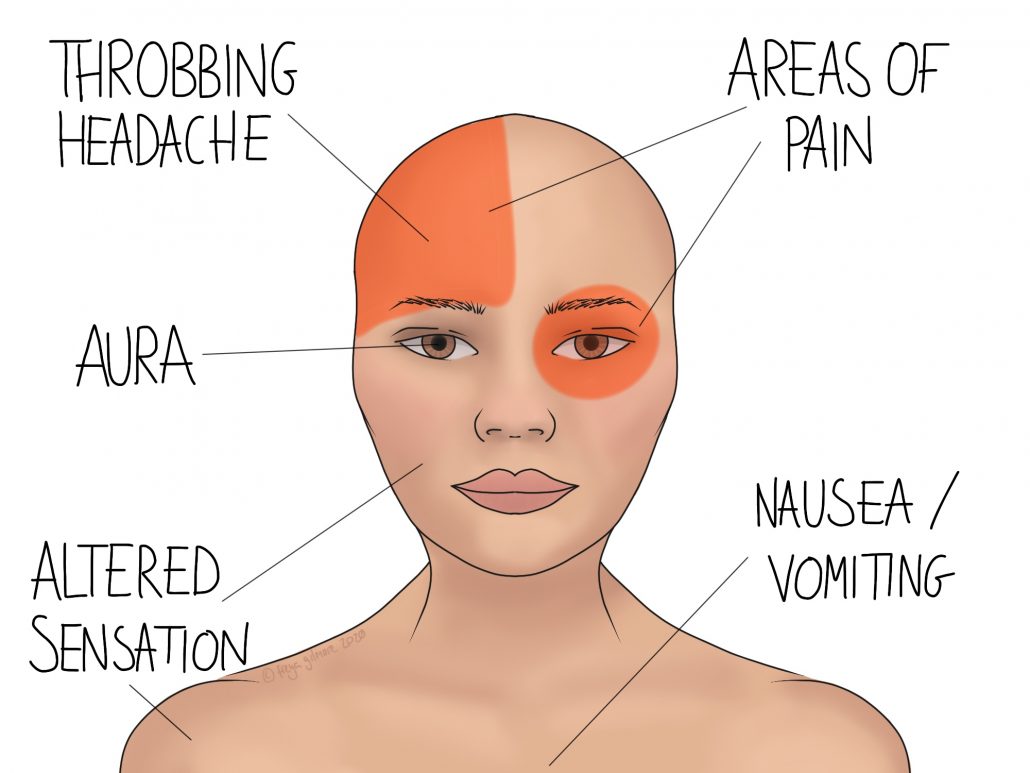Migraine is a condition with three sub-types:
- Without aura
- With aura
- Chronic
There can be a lot of variation between the three, but typically they will all involve headaches. These may come with nausea, or sensitivity to light or sound. Headaches themselves are typically only on one side, and may be throbbing. For patients who experience an aura, they may be able to react in time to avoid the headache itself.

Causes of Migraine
A number of elements come together to cause a migraine. Sugar and caffeine have been linked to episodes of migraine, as have dehydration and exhaustion. There is a strong genetic link, with most sufferers having a close relative who also experiences migraines. They can also coincide with hormonal changes, such as menopause and pregnancy. These events can improve or worsen symptoms.
Some factors are therefore out of your control, but others may be more manageable. Keeping a food diary and making sure to drink enough water can be effective in reducing frequency or intensity of symptoms. Spotting patterns can be difficult, so you may find that discussing your notes with your osteopath to be helpful.
Possible Explanations
Understanding of exactly how migraines develop is still lacking. The current theories are that over-excited nerves cause disruption, or contraction and relaxation of blood vessels leads to the throbbing headache and other disturbance. It may also be a combination of the two.
Osteopathy and Migraine
The current understanding is that migraines are caused by changes to nerves or blood vessels. Osteopaths don’t work on nerves and vessels like they do with muscles and joints, but we may be able to affect them indirectly. Research has shown osteopathic treatment to be more effective than medication in the prevention of migraines. Osteopathy can work alongside medication prescribed for when a migraine does take hold.
Using knowledge of anatomy and physiology, we can work into the neck, shoulders, and upper back to encourage change through the structures that supply the head. We use techniques to the neck and upper back to improve general function. When a joint is stiff, neighbouring joints need to work harder. This can lead to tight muscles which play a role in some headaches. This same pattern may also be present alongside the other factors in your migraines.
Rachel uses dry needling where appropriate. Evidence shows that this can be effective for managing migraines too. Some patients find dry needling to be particularly effective, and much less painful than expected.
If you suffer from migraines, see what osteopathy can do to help you prevent them. Book in online here.

